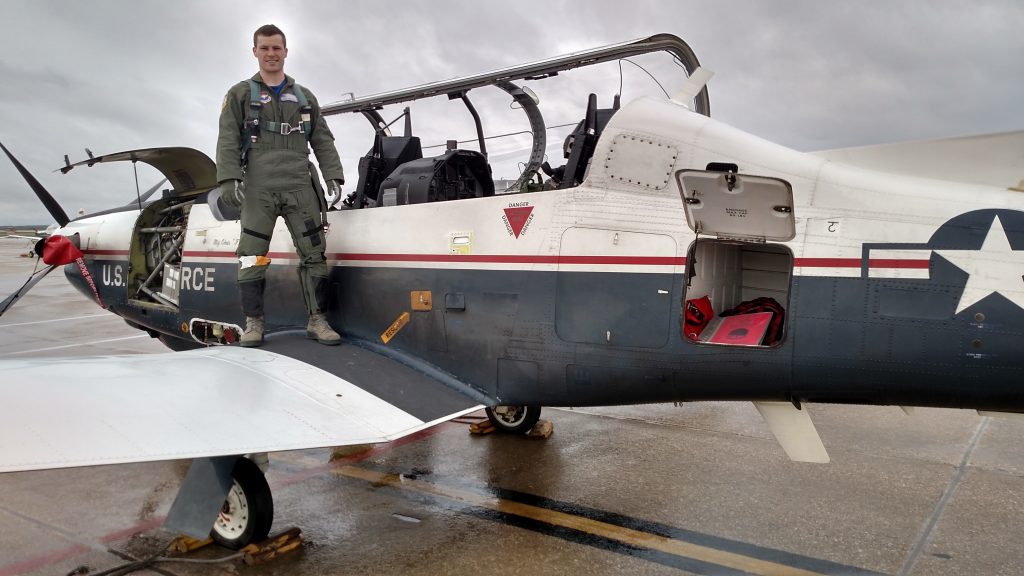
Note: Below is a guest post on Doctor Aviation. This is the third in a series (for others see: https://doctoraviation.com/becoming-an-air-force-pilot/ and https://doctoraviation.com/becoming-an-air-force-pilot-ii/ ). It is written by Craig, who is in the midst of becoming an Air Force pilot. It will give aspiring Air Force pilots a glimpse of what it is really like. In this case, UPT. This is Craig’s journey in his own words.
Undergraduate Pilot Training (UPT) has changed very little over the years. In fact, there is a Youtube video (https://youtu.be/RkAaoC337BE ) showing UPT in 1966 that is nearly identical to UPT 50 years later when I went through in 2016. It has historically been an extremely challenging and long year. This blog is part three in a series of blogs about becoming an Air Force pilot. In this blog, I will focus on the first half of UPT and some of my experiences over those few months.
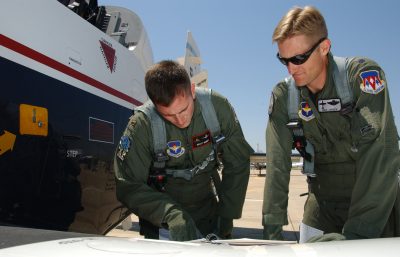
UPT consists of just over a year of training with a group of about 24 peers. The first six weeks consists of academics to lay the groundwork for learning to fly the Beechcraft T-6 Texan II. On the lineup is aerospace physiology, aerodynamics, systems, flying fundamentals, contact, weather, instruments, navigation, and formation. After learning through lectures, computer based software, and individual study, a total of nine tests are given before flying. An additional four are taken during flying training.
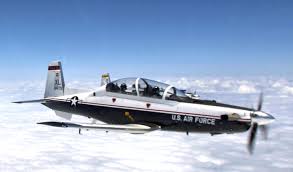 The Beechcraft T-6 Texan II
The Beechcraft T-6 Texan IIThe mindset while studying for these tests is competition. You want to be the best test taker in the class because it will end up being ten percent of your overall ranking in the class. The other ninety percent is broken up into your flight commander’s ranking (twenty percent), daily flying rides (thirty percent), and checkrides (forty percent). The competition is fierce. The top students academically will only miss at most fifteen questions out of almost seven hundred which equates to about ninety-eight percent overall.
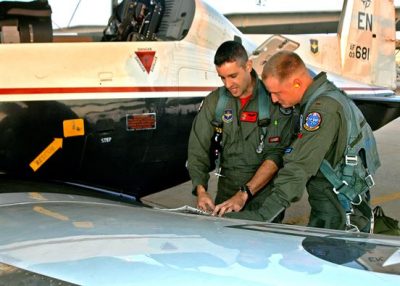
Your class ranking is called your MASS, Merit Assignment Selection System. It determines what you will track for the second half of UPT and ultimately what assignment you will get at graduation. This number paves the way for the rest of your career. There is no redo or second chances. The top student gets his top choice of aircraft. The bottom student gets what is left. When something as significant and determining as this hangs in the balance, one can imagine how easily it could consume your thoughts throughout such a program (To emphasize the significance, consider the fact that the minimum pilot active duty commitment is ten years).
Let me briefly digress on the topic of comparison. This MASS score is by design a comparison tool to help the Air Force determine who should end up where to best optimize resources and effect mission accomplishment. However, when broken, sinful people are introduced to a comparison tool, their identities are at stake. This MASS score can be an easy trap for many to fall into the dark pit of comparison. Comparing leads only to pride or despair, and the only solution to this vicious and destructive thinking is by finding your true and lasting identity in God. Only then can you be free to perform your best and rest in His plan for your life. Then you don’t need to constantly worry about how you are performing compared to your peers.
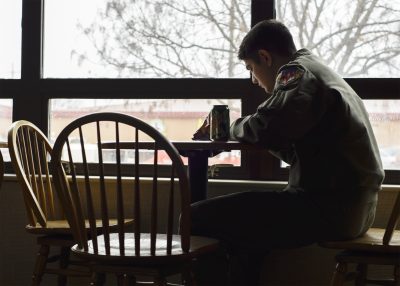 Chair Flying
Chair Flying
Not only were academics competitive, the actual flying itself was very competitive for the same reason mentioned above. This honestly led to better performance and preparation. The preparation consisted of learning checklist flows, callouts, radio procedures, pattern procedures, emergency procedures all before actually learning whatever the mission was. This learning was mostly done through what is called “chair flying”. Chair flying is basically just rehearsing in great detail every step of the next sortie. The flying curriculum progressed from contact flying to instrument flying to ending with formation flying.
The Actual Flying
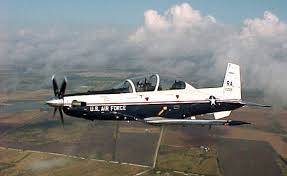
Contact flying was mostly learning the basics: maintaining altitude and airspeed. That in itself was the building block to more advanced flying because it began the learning process of the cross check. The cross check is knowing what information to gather at what time in order to stay ahead of the jet. Contact flying also included learning how to fly the pattern, learning how to do emergency patterns, learning aerobatics, and learning how to stall and spin the aircraft. The focus was mostly on looking outside versus looking inside at your instrument gauges.
 The Instrument Panel in the T-6
The Instrument Panel in the T-6Instrument flying was the time to learn to look inside at your gauges. It was very different from contact in that you were trying to fly very smooth and effortless. There were rules to learn and techniques to apply. Instrument flying was a steep learning curve right in the thicket of trying to keep up with everything else. The highlight of the instrument flying was going cross country to different airfields and gaining experience in a new environment versus the canned one that repeats itself back at base.
 The T-6 in Formation
The T-6 in FormationFinally, the most exciting flying by far was formation. We learned how to fly ten feet from the wing of another airplane. It certainly takes finesse to learn how to be stable when you are that close. We also practiced extended trail (ET) which was a very basic form of dog fighting. ET trains you to try and maintain a certain position behind your wingman whom you are “fighting” without changing your power setting. It presents interesting challenges as you think about energy management and geometry.
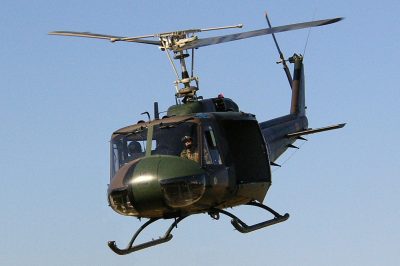
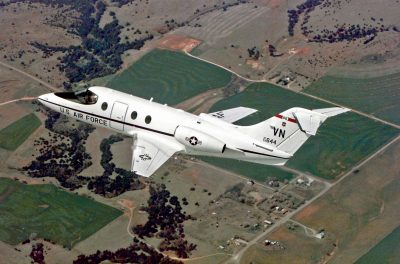
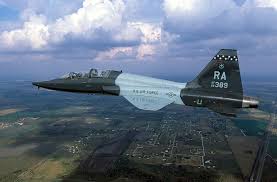
UH-1 T-1 T-38
At the end of T-6’s, each student must submit a dream sheet for the track he or she would like to continue their training in. The options are the UH-1H for helicopters, the T-1 for heavies/tankers, or the T-38C for fighters/bombers. The top students typically go T-38s which makes that track more competitive. Just over half the class will end up in T-1s while only one or two will take the UH-1H. Contact flying was good insight into helicopter flying; instrument flying was good insight into flying heavies and tankers; and formation flying was good insight into flying fighter aircraft. My desire was to take the fighter route and I had to wait and trust God for my choice at track selection.

Thanks for the great blog Craig. I hope your flying the T-38 by now. I’m looking forward to your next segment. My son is 17 and is a wanna be fighter pilot. I hope he reads this blog. God bless!